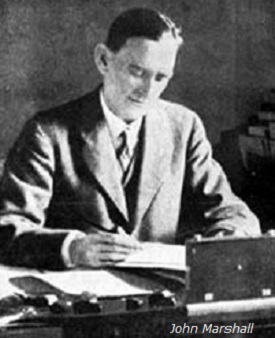
- Ancient Indian History - Home
- Study of Indian History
- Writing of Ancient Indian History
- Imperialist Historiography
- Historiography Nationalist Approach
- Marxist School of History
- Sources of Ancient Indian History
- Archaeological Sources
- Geographical Background
- Geography in Ancient Literature
- Stone Age Cultures
- Mesolithic Culture
- The Neolithic Age
- Chalcolithic Period of India
- Chalcolithic Culture In India
- Harappan Civilization
- Harappan Town Planning
- Harappan Crafts & Industries
- Harappan Culture
- Harappan Religion
- Harappan Chronology
- Vedic Civilization
- Vedic Society
- Vedic Politics
- Vedic Religion & Philosophy
- The Aryan Invasion
- Later Vedic Age
- Social System after Vedic Age
- Achievements of Indian Philosophy
- Evolution of Jainism
- Evolution of Buddhism
- Alexander’s Campaign in India
- Maurya Dynasty
- Kalinga War & its Impact
- Society & Economy during Mauryas
- Mauryan Governance
- Early History of South India
- Age of Smaller Dynasties
- Literature of Satavahana Period
- Society of Satavahana Period
- Economy of Satavahana Period
- Technology of Satavahana Period
- Chola Dynasty
- Pandya Dynasty
- Chera Dynasty
- Period of Foreign Invaders
- Gupta Period
- Decline of Guptas
- Governance of Gupta Period
- Literature of Gupta Period
- Economy in Gupta Period
- Science & Tech of Gupta Period
- India after the Gupta Period
- Period of Harsha
- South India during the Harsha Period
- Kadamba Dynasty
- History of Kamarupa
- India after Harsha
- Gurjara Pratiharas
- Palas of Bengal
- Rashtrakutas of Deccan
- Literature after the Harsha Period
- Society after the Harsha Period
- Economy after the Harsha Period
- Religion after the Harsha Period
- References & Disclaimer
Harappan Chronology
Marshall suggested that Harappan civilization flourished between 3,250 and 2,750 B.C.
Wheeler dated it to 2,500-1,500 B.C.
-
On the basis of radiocarbon dating method following chronology of the civilization emerges as −
Early Harappan Phase: c. 3,500 2,600 B.C.
Mature Harappan Phase: c. 2,600 - 1,900 B.C.
Late Harappan Phase: c. 1,900 1,300 B.C.
Decline

John Marshall (Director-General of the Archaeological Survey of India from 1902 to 1928) declares that Harappan civilization declined due to environmental degradation. The cutting of forests for agricultural land and timber for fuel and over-exploitation of resources, etc. resulted in the land to become barren and in the silting of rivers.
The environmental degradation, flood, drought, and famine must have become a recurring feature, which finally led to its decline.
Wheeler opined that it was destroyed by the Barabarian Aryans who came to India in about 1,500 B.C.
The archaeological or biological evidence proved that Wheeler's thesis of Aryan was the destroyer of the Harappan civilization was a myth.
-
The Harappan civilization was spread over a large area. There may be many causes of its decline as −
In the River Saraswati region, most likely, it declined mainly due to shifting of river channels.
Along the River Indus, most likely, it declined largely due to recurring floods.
Rainfall declined in general, which affected the agriculture, the main economic resource.
With the decline in economic conditions all other institutions like trade and commerce, administrative and political structures, Civic amenities, etc. also declined over a period of time.
Archaeological evidence shows that Harappan civilization did not disappear suddenly.
The decline was gradual and slow, which is witnessed over a period of almost 600 years from c. 1,900-1,300 B.C.
Features such as town-planning, grid patterns, drainage system, standard weights, and measures etc. slowly disappeared and a kind of realization takes place with distinctive regional variations.